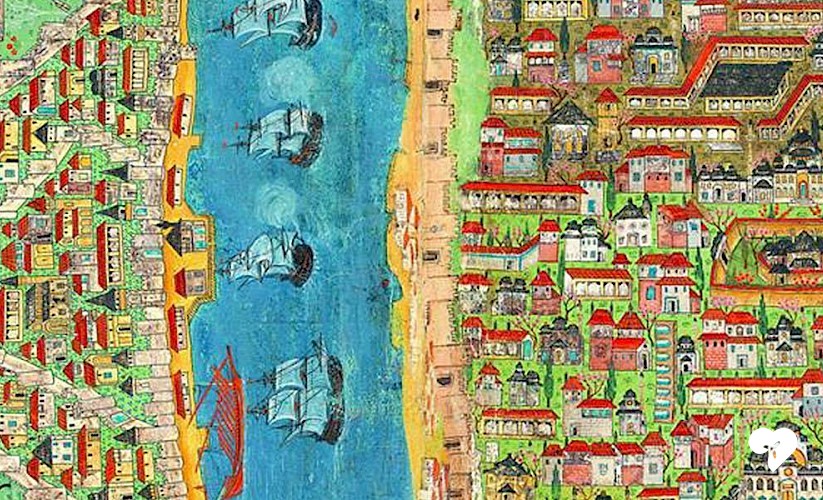Wait, who’s Evliya Çelebi?
Evliya Çelebi, whose real name was Mehmed Zilli, was an Ottoman explorer who traveled through all the lands of the Ottoman Empire in the 17th century, writing a travelogue called the Seyahatname, or "Book of Travel." He spent 50 years in visiting and writing what he saw, and his epic journey began right in Istanbul.
He was born in Istanbul, though his family was from Kütahya. One of the houses he lived in Kütahya has been turned into a museum. UNESCO marked 2011 the year of Evliya Çelebi, the year in which he would have turned 400.
Evliya Çelebi traveled a particular route when traveling around Istanbul. He told many of Istanbul's stories, describing the conditions of the people, the city's geography, the history, the language, the religion, the clothing, and the arts of all the places he visited. As he knew Istanbul well, his sections on Istanbul are some of the most illuminating part in his entire incredible work.
Ahi Çelebi Mosque

One of the first places we should think about when we're following in the footsteps of Evliya Çelebi is the Ahi Çelebi Mosque in Eminönü. This small little mosque is named after a doctor, and the legend it has is being the place where Evliya Çelebi's journey began. In a dream at this mosque he saw a vision of the prophet Muhammad who blessed his travels, and the rest is history!
Rumeli Fortress

This fortress was built along the Bosphorus by Mehmed II and used to take the city for the Ottoman Empire in 1453. Even today it's one of the nicest spots in the city to visit as you climb the ramparts and look out over the city from its massive walls.
Çelebi tells us that long before the conquest there was a church and a priest who lived there. The priest secretly adopted the Islamic faith, and when he learned that Mehmed was in nearby Edirne, he sent a message telling him that he would be the one to take Istanbul. The priest advised him to build the fortress and to cut off the Byzantine supplies, which is of course the origins of the fortress that lies there today.
Galata Tower and the story of Hezarfen Ahmet Çelebi
.jpg)
One of the greatest legends of all of Turkish cultural history is that of Hazarfen Ahmet Çelebi, "the first man to fly." His tale is only told in the Seyatname by Evliya Çelebi.
Hazarfen supposedly made makeshift wings and wore them before jumping off the Galata Tower and soaring through the air all the way across the Bosphorus to its Anatolian side in Üsküdar. He undertook this flight in 1632, according to Evliya, on a windy day, and made his way a total of 3,558 meters. This journey is now a focal point for all travelers who go to the top of the Galata Tower and look down and out over the Bosphorus, imagining themselves taking this incredible flight of science and bravery .
Anadolu Kavağı and Yoros

Castle Evliya Çelebi describes the village out here along the Black Sea coast as a small harbor with fewer than 800 homes. Today, it's not much more than that as it still represents a quiet spot right on the northern coast of the city, but it's a beautiful spot to come and relax and enjoy the fortress built by the Ottomans to protect the strategically important Bosphorus Strait.
Kanlıca

Kanlıca is another district mentioned in the Seyahatname, and it's still one of the cutest coastal districts (or village as it used to be) in all of Istanbul. Çelebi discusses the mansions along the waterfront, though none have survived from his day.
Today, Kanlıca is famous for its tea gardens and the yogurt that's made by their own and sold in stalls along the street.
